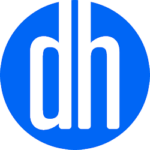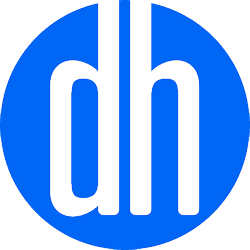Prescription medications serve a vital purpose in healing, but when misused, they can quietly take control of your life. What starts as directed use for pain management or mental health concerns may gradually develop into a dependence that alters brain chemistry and daily functioning.
Breaking free from prescription drug abuse requires professional support that addresses both the physical aspects of withdrawal and the psychological patterns behind the misuse. Addiction treatment combines medical expertise with therapeutic approaches to create sustainable recovery plans tailored to personal needs. With the right combination of medical intervention and emotional support, recovery from prescription drug dependence is possible.
Understanding Prescription Drug Abuse and How it Begins
Prescription drug abuse occurs when a person uses medication in a way not intended by the prescribing doctor. This could include taking higher doses, mixing pills with other substances, or using them purely for euphoria rather than treatment. It often begins innocently enough: a legitimate prescription for pain, anxiety, or focus evolves into dependency.
Prescription Drug Abuse: Statistics and Trends
Approximately 14.4 million Americans reported misusing prescription psychotherapeutic drugs in the past year
Among these, 8.6 million people misused prescription pain relievers
About 4.7 million people misused prescription tranquilizers or sedatives
Approximately 3.9 million people misused prescription stimulants
An estimated 5% of 12th graders reported misusing any prescription drug in the past year
Prescription drug misuse is most prevalent among young adults aged 18 to 25, with a rate of 14.4%.
Men are more likely to misuse prescription drugs than women, with rates of 6.4% and 5.2%, respectively
American Indian or Alaska Native adults have the highest rate of prescription drug misuse at 12.1%, followed by White adults at 8.6%.
The misuse of prescription drugs costs the United States over $78 billion annually, encompassing healthcare expenses, lost productivity, and legal costs
The Most Commonly Abused Prescription Drugs
Prescription drug misuse is a significant public health concern, with certain medications being more commonly abused due to their psychoactive properties. Some of the most frequently misused prescription drugs include the following:

![]()
Opioids
Prescribed primarily for pain relief, opioids can produce euphoria, leading to misuse. Commonly abused opioids include:
- Oxycodone (e.g., OxyContin, Percocet)
- Hydrocodone (e.g., Vicodin, Lortab)
- Morphine (e.g., MS Contin, Kadian)
- Fentanyl (e.g., Duragesic)
![]()
Central Nervous System (CNS) Depressants
Used to treat anxiety and sleep disorders, these medications can cause sedation and drowsiness. Misused CNS depressants include:
- Benzodiazepines (e.g., Valium, Xanax)
- Barbiturates (e.g., Nembutal)
- Sleep Medications (e.g., Ambien, Lunesta)
![]()
Stimulants
Typically prescribed for attention-deficit hyperactivity disorder (ADHD) and certain sleep disorders, stimulants can enhance alertness and energy. Commonly misused stimulants include:
- Amphetamines (e.g., Adderall, Dexedrine)
- Methylphenidate (e.g., Ritalin, Concerta)
Warning Signs and Symptoms of Prescription Drug Addiction
Recognizing the warning signs and symptoms of prescription drug addiction is crucial for early intervention and support. These indicators can manifest in various aspects of a person’s life:
- Increased usage: Consuming higher doses than prescribed or using the medication more frequently
- Doctor shopping: Visiting multiple healthcare providers to obtain additional prescriptions.
- Secrecy: Being evasive or secretive about medication use or hiding pills
- Neglecting responsibilities: Failing to fulfill workplace, school, or home duties
- Social withdrawal: Isolating from family and friends or abandoning previously enjoyed activities
- Drowsiness or lethargy: Appearing unusually tired or sluggish
- Changes in sleep patterns: Sudden onset of insomnia or sleeping endlessly
- Weight fluctuations: Noticeable weight loss or gain without a clear cause
- Pupillary changes: Constricted or dilated pupils not related to lighting conditions
- Coordination issues: Exhibiting impaired motor skills or unsteady movements
- Mood swings: Sudden changes in moods
- Anxiety or paranoia: Displaying heightened nervousness or irrational fears
- Depression: Showing signs of persistent sadness, hopelessness, or lack of interest in activities
- Relationship strain: Frequent conflicts or distancing from loved ones
- Financial problems: Unexplained need for money or financial hardships
- Legal issues: Encounters with law enforcement related to drug use or possession
How Prescription Drug Abuse Affects the Mind and Body
Misusing prescription medications can lead to significant and multifaceted health issues affecting both your mind and body. The specific consequences vary depending on the type of drug, dosage, duration of misuse, and personal factors. Below is an overview of potential effects:
- Memory impairment: Misuse of certain prescription drugs, such as benzodiazepines, can lead to difficulties with memory and concentration.
- Cognitive decline: Long-term misuse of prescription medications may result in problems with attention and decision-making, making daily living more difficult.
- Mood disorders: Misuse of prescription stimulants can cause mood changes, including increased anxiety and paranoia.
- Depression: Long-term misuse of prescription drugs can lead to depression.
- Heart issues: Misuse of stimulants can lead to high blood pressure, fast heartbeat, and other heart problems.
- Respiratory depression: The misuse of certain prescription drugs, such as opioids, can lead to slowed breathing.
- Nausea and abdominal pain: The abuse of prescription drugs can cause nausea and abdominal pain, which can also lead to changes in appetite and weight loss.
- Weight fluctuations: Misusing prescription stimulants can lead to reduced appetite and weight loss.
- Opioids (e.g., oxycodone, morphine): Symptoms often begin within hours of the last dose and can include muscle aches, yawning, runny nose, and more severe manifestations like rapid heartbeat and high blood pressure.
- Benzodiazepines (e.g., Xanax, Ativan): Withdrawal can lead to heightened anxiety, agitation, seizures, and, in severe cases, life-threatening complications.
- Stimulants (e.g., Adderall, Ritalin): Discontinuation may result in fatigue, increased appetite, depression, and vivid, unpleasant dreams.
Other Complications
Stimulant drug misuse can lead to sleeping problems like insomnia. Also, prescription drug abuse can lead to a weakened immune system, increasing the risk of illness and infection. Abusing certain prescription drugs, such as benzodiazepines, can lead to trouble walking and slow reflexes.
Finally, prescription drug abuse may cause issues with co-occurring disorders. Drug use and other mental illnesses often co-occur. In some cases, mental health disorders such as anxiety, depression, or schizophrenia may develop before addiction. In other instances, drug use may trigger or exacerbate those mental health conditions.
Prescription Drug Abuse Treatment Programs
- Opioid Use Disorder (OUD): Medications such as methadone, buprenorphine, and naltrexone are commonly prescribed to alleviate withdrawal symptoms, reduce cravings, and block the euphoric effects of opioids.
- Stimulant Use Disorder: While no FDA-approved medications specifically treat stimulant addiction, certain medications like bupropion and mirtazapine have shown promise in reducing cravings and promoting recovery.
- Cognitive Behavioral Therapy (CBT): CBT helps people identify and modify negative thought patterns and behaviors associated with drug misuse, fostering healthier coping strategies.
- Contingency Management: This approach provides tangible rewards for positive behaviors, such as maintaining sobriety, reinforcing commitment to recovery.
- Matrix Model: Combining elements of behavioral therapy, early recovery training, family education, and 12-step support, this model is particularly effective for stimulant addiction.
- Medically Supervised Detox: Under professional care, people undergo a process to safely withdraw from addictive substances, managing withdrawal symptoms and preparing for ongoing treatment.
- Residential Treatment: Provides a structured environment where people reside for a period, receiving intensive therapy and support to overcome addiction.
- Outpatient Programs: Allow people to live at home while attending scheduled treatment sessions, offering flexibility for those with work or family commitments.
- 12-Step Programs: Groups like Narcotics Anonymous (NA) and Alcoholics Anonymous (AA) offer peer support, shared experiences, and a structured path to recovery.
- SMART Recovery: Focuses on self-empowerment and cognitive-behavioral techniques to support people in managing their addiction.
- Remote Counseling and Medication Management: Utilizes digital platforms to provide therapy and prescribe medications, enhancing accessibility, especially in underserved areas.
What to Expect During a Prescription Drug Rehab Program
Upon entry, people undergo comprehensive assessments to tailor treatment plans to their specific needs, considering factors like the type of medication abused, duration of use, and any co-occurring mental health conditions.
Supervised detox helps people safely eliminate the substance from their system, managing withdrawal symptoms with medical oversight to ensure comfort and safety. Then, during treatment, individuals can receive support and guidance through therapy. Medication-assisted treatment and other substance abuse treatment approaches can also help people to become and remain free from addiction.
As people transition back to daily life, aftercare plans are developed, including ongoing therapy, support group participation, and relapse prevention strategies to maintain long-term recovery.
Receive Help For Drug Addiction At DrugHelp
Our specialists help find the right care plan, from inpatient programs to outpatient services and telehealth options. With 24/7 access to experts and life-saving resources, taking the first step toward recovery becomes more accessible.
Healing requires proper support and professional guidance. Recovery is a process of growth and change, and reaching out for help could be your most important step. Your journey begins with a single decision to contact us today.


